 JAN BROGAN: One of the most intimidating things for me as a mystery writer was the whole "weapons" thing. Not only were guns completely foreign to me, I had so many preconceived notions, I didn't even want to learn about them. I had to get over that for Teaser, and the way I did was spend a morning at a shooting range(where I learned a lot of respect for gun owners.) But there are easier ways, and Bill Chipman, police sergeant, firearms instructor, and mystery author, has agreed to give us a primer.
JAN BROGAN: One of the most intimidating things for me as a mystery writer was the whole "weapons" thing. Not only were guns completely foreign to me, I had so many preconceived notions, I didn't even want to learn about them. I had to get over that for Teaser, and the way I did was spend a morning at a shooting range(where I learned a lot of respect for gun owners.) But there are easier ways, and Bill Chipman, police sergeant, firearms instructor, and mystery author, has agreed to give us a primer.Bill Chipman: Ever read or watched a scene and realized that the author has described or depicted something that’s impossible? He’s talking about a city where you lived for a few years or went to college, and you realize that those streets he’s talking about don’t exist, or traffic travels in the opposite direction?
Depending on your suspension of disbelief, your reaction can range from wanting to scream and throw the book out the window to a mild bump in the smooth path of your enjoyment of the story. It’s about attention to detail and research, and it happens all the time with guns, on the screen and the page.
Ever read in a book about how someone’s just fired ten shots from a revolver? Doesn’t happen. Revolvers carry six shots. Yeah, sure, a tiny number of specialized revolvers carry five, and fewer still eight, but a revolver is a six shot gun. Once you fire six, you have to open it up and reload the bullets into each chamber, and then it can fire six shots again. And revolvers are not ‘pistols.’
‘Pistols,’ or ‘Automatics’ are common names for the Semi-Automatic Pistol. They are not fully automatic. They cannot fire multiple rounds from one trigger pull. The trigger must be depressed each time a round is fired. The ‘Semi-Automatic’ part refers to the way the gun reloads the chamber to fire again.
When a Semi-Automatic Pistol is fired, the explosion from the charge creates rapidly expanding gas, generating recoil energy, just like a revolver. The difference is, the Semi-Automatic makes use of that energy to push the long part on the top of the gun, known as the ‘slide,’ along rails to the rear (hence the name), held in place by those rails and a big spring.
The spring then stops the motion to the rear, reverses it, and brings the slide back forward to the firing position. As it does, it scoops another bullet from a spring-loaded magazine (often incorrectly referred to as the ‘clip’) and deposits that bullet in the chamber, so that the pistol is ready to be fired again. All of that happens in a fraction of a second, mechanically and ‘automatically.’
The Semi-Automatic Pistol was designed so that it could carry and fire more bullets in a shorter period of time, giving its carrier a tactical advantage over the revolver. And then it can be reloaded easily by carrying extra magazines. The revolver and the pistol are markedly different weapons, a fact often overlooked, both in our writing and in TV shows and movies.

And there are no guns made of plastic that can pass through metal detectors without setting them off. Some guns have parts made of polymer plastic. Incorporating the polymer prevents corrosion and reduces weight. Both good things.
But there is no plastic that can withstand the heat and trauma associated with the explosive charge of a bullet. It melts and deforms. So even guns with plastic parts have enough metal, necessary to the function of the weapon, to set off a metal detector or bein an x-ray.
Ever read a newspaper story where they talk about someone having an ‘accidental discharge,’ and how ‘the gun just went off?’ Guns don’t just go off, even if dropped. Unless there’s something mechanically wrong, the trigger has to be pulled.
Now that can happen, for instance, when someone’s sticking a gun into their waistband, and the trigger catches in clothing, or if something else gets caught in the trigger guard as a cop is holstering the weapon. But guns do not just go off. Accidental discharge is a neutral way of saying that someone screwed up.
The fact that the trigger has to be pulled itself points to another common inconsistency on the screen: Cops running around with their fingers on the trigger. Cops don’t do that, because it’s proven to be one of the precursors to accidental discharge. Imagine that something startles the officer, and she tenses up. Her fingers tense too, it’s an instinctive reaction. Fight or flight stuff. You get scared, your whole body tenses up. And cops get scared.
But say it’s not something dangerous, just something unexpected, in an already tense situation. The cop tenses and pulls the trigger instinctively, without making a decision based on the threat level. Bang goes the gun, the bullet finds whatever stands in front of it, and an innocent or unarmed person is shot without cause. Cops are trained not to place their finger on the trigger until a rising threat creates the need to fire the gun.
And the whole dramatic approach, with the gun up by the protagonist’s ear. I know it looks great, because you can do a tense facial close up, and still see the gun. But not in the real world. Guns are kept pointed at the ground unless they’re about to be fired. This is because if you have an accidental discharge while the gun is pointed up, well, what goes up, comes down. And, while rare, there are documented cases of innocent citizens, miles away, being injured by a stray round fired into the air. Think Third World celebratory gunfire. Scares the hell out of me every time I see it on TV.
The gun is kept in the ‘low-ready position’ until there is an identifiable threat. That means pointed at the ground, never up, and never ‘lasering’ the cop in front of you. Imagine a laser attached to the front of the gun, on all the time. Any time that laser crosses another person, you either intended to shoot that person, or you made a mistake. That’s gun safety 101.
Every gun manufacturer has a schematic of its weapons on the internet, and will send them to prospective customers upon request. And there’s no shortage of gun enthusiasts posting how to use them, and what they’re capable of, on Youtube and similar sites. Not to mention the helpful enthusiasts at your local firing range. The guns in our dramas deserve the same attention to craft that gardening, or racecar driving, deserves.
JAN: In the spirit of holiday giving, Bill has generously agreed to try to answer any gun questions you may have, so.... pardon the pun....shoot away! And if you want more information on his new mystery, Sucker's Dance, check out his website at www.billchipman.com





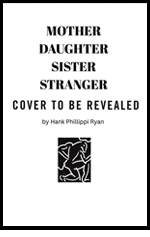
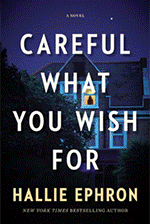
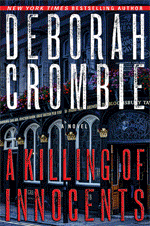


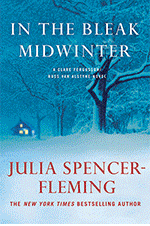
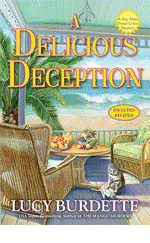
Can I just say hi to Bill? You may not remember me, but I wanted to say I think HUPD is wonderful, and thank you for all the many helps over the years. I am on disability leave, formerly of HMS, HUGSE, HDS '96. R. Carter
ReplyDeleteI've been told by a Vietnam vet that my best choice of defensive weapon is one called "The Judge" due to its historical targets-unfortunately. This weapon can shoot bullets or shot, but for defense, shot was best. He said that the weight shot could be varied so that women wouldn't have as difficult reaction to recoil. Do you agree?
ReplyDeleteThis is so helpful Bill! I can't think of a gun question right now but going to save this until I write a gun scene. Thanks for stopping by JRW!
ReplyDeleteHi there Reine. always nice to hear from the Harvard family. thanks for stopping by.
ReplyDeleteE. B.
That weapon is a sound choice for anything under twelve feet, using the shotgun shell. After that distance, the shot tends to spread out and make it inaccurate. The Taurus Arms Judge can also be used with a .45 caliber round, so one option might be to load it with one .410 shell, one .45 cal, etc., then you could argue the best of both worlds.
But as with any firearm, the key is practice. If you're not going to shoot it with reasonable regularity, the recoil will surprise you regardless. There is no substitute for regular practice.
Regards,
Bill
Welcome Bill and thanks! In my first four books my heroine was more likely to bash someone with a pair of garden loppers than use a gun, but going forward this info will be very helpful.
ReplyDeleteI always wondered about the shooting in the air thing..and now, of course, that poor Amish girl killed when someone did exactly what you said. (shot gun in air..over a mile away and bullet found girl in buggy.
OH, printing this out..thank you! It makes me realize I avoid guns in my books...and one reason is all the complications that come with them. It's always difficult to decide how to kill somone. :-)
ReplyDeleteLove this handy-dandy guide! Thanks for being here to day.
Fascinating information, Bill. Thank you.
ReplyDeleteI have to ask, what is "Verbal Judo"? Intriguing idea!
I wish you all a Merry Christmas and the very happiest and most successful of years in 2012.
And thank you for the entertainment and enlightenment you've all brought to my life, in so many ways. Love you all.
Great post, Bill, and very helpful. I have zero suspension of disbelief so I'm the kind of reader who will put down a book if I find an obvious mistake. Ergo, if I ever need to kill someone, I will probably hit them over the head with a frying pan.
ReplyDeleteKaren, regarding Verbal Judo, I read it while involved with a teen book group at the big rough high school. It came in very handy.
Okay, so now I have to know, too.
ReplyDeleteBill what exactly is verbal judo?
~Jan
Thanks very much for having me.
ReplyDeleteVerbal Judo is a patented technique (www.verbaljudo.com) for dealing with difficult people, originally only for cops, but modified to work for anyone/everyone in a line capacity who frequently deals with angry people (think parking monitors, unemployment counselors, teachers)
Ramona, I share that suspension of disbelief situation, and it can get you up off the couch or make you put down a book. I do my best to remember that in my writing, because of that unspoken responsibility to keep the reader's interest. I think it may be the most important part of a writer's work. If you decide that frying pans don't work for your story, feel free to drop me a line through my website.
Sounds like a good skill for everyone to have, not just cops.
ReplyDeleteThanks for the info, Bill and Ramona!
Verbal Judo's skillsets definitely work everywhere (including at home). My Dad still brings it up every time i talk him into something that he did not originally want to do.
ReplyDeleteAnd, cops being cops (by that i mean bursts of adrenaline surrounded by long periods of time spent sitting around amusing ourselves at each other's expense)the cops i work with started referring to Verbal Judo as Chipman's Tongue Fu.
which i thought was pretty funny, even at my expense.
Welcome, Bill! Very useful information!
ReplyDeleteSo if a person had a revolver, not pistol, in her hand, trying to shoot someone, and was knocked down by police, the gun that went flying from her hand wouldn't go off when it hit the ground?
Highly unlikely that either pistol or revolver just goes off because it fell to the ground. Most are designed specifically to avoid that. If you need that to happen for your storyline, then you need to dig deep or get creative. Maybe the trigger catches on something small and pointed as it falls? You could probably weave that in without too much trouble.
ReplyDeleteReine, I was going to answer your late-night comment on Wednesday's post, but apparently Wednesday got lost somewhere. ???
ReplyDeleteAnyway, thanks for your congrats. I don't know if I'll make the Tucson Festival with this year's book, but with this next one, for sure.
Thanks, Bill. I didn't want it to go off, but was afraid it would. It's so reassuring to hear from an expert. I appreciate the help!
ReplyDeleteLinda, Tucson will love you!
ReplyDeleteBill, thanks again. "Tounge Fu." Hah! Lots of imagery there. Looking forward to reading your books. I had no idea
I grew up handling weapons and then used sidearms in several career capacities within the court system and then law enforcement. An author who doesn't research and I recognize the "wrongness", no matter the subject, gets a wall bounce and DNF from me!
ReplyDeleteYou've done a terrific job answering some basic questions, Bill. Thanks so much for dropping by the Jungle and sharing your expertise. This is a great primer for writers and readers alike!
Stay safe out there.
Thanks Bill. For some reason, I thought the chambers had to be one or the other and couldn't be one bullet another shot. Thanks for the information.
ReplyDeleteBill, Verbal Judo works with oppositional teenagers too. I can testify on that.
ReplyDeleteThank you for the offer to contact you with questions. What I may need is someone from the bomb squad...I mean, the explosive disposal unit.
Great information, Bill - I've always wondered about that shooting up in the air thing.
ReplyDeleteSemi-automatics leave behind spent shell casings, right? What do they look like, and how far do they travel?
'Preciate the kind words, all around.
ReplyDeleteA spent cartridge is almost always brass, although some cheaper versions are made of aluminum. here is a link to a picture of one next to a semi-automatic pistol.
http://thefiringline.com/forums/showthread.php?t=368170
They are cylindrical and hollow from one end after firing. The other end is closed, and is where the charge is housed and struck by the firing pin. The bullet exits the casing and leaves the hollow.
Semi-Autos do flip out the spent shell casing after the round is fired, making room for the next round. The casings travel end over end, usually no more than a few feet in the air, but can bounce some distance on a hard surface or floor.
It's important to note, too, that almost all flip out to the shooter's right, but can occasionally (infrequently) bounce straight back or to the left depending on how they hit the floor.
Spent shell casings can land on your head too, if the guy next to you on the firing range is taller than you are. Like my 6'7" brother-in-law, bless him. I was more surprised by fairly warm casings bouncing off my head (and down my cleavage, not something I recommend) than the loudness of the shots or the recoil of the guns.
ReplyDeleteExcellent post, Mr. Chipman. Thank you!
Bill, one correction. You don't load "bullets" in a magazine or the chambers of a revolver. You load cartridges. A cartridge has four elements - the powder, the primer, the cartridge case, and, finally the bullet itself. The bullet is the projectile and it is what is propelled through the barrel. The now empty cartridge case is either left in the chamber (in a revolver), or extracted from the chamber and thrown clear of the gun (in a semi-automatic pistol).
ReplyDelete